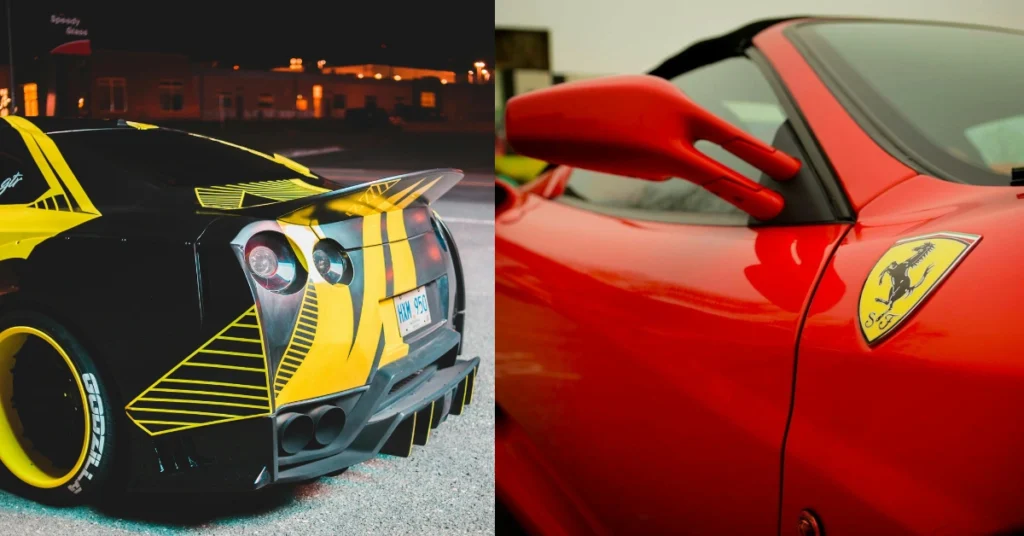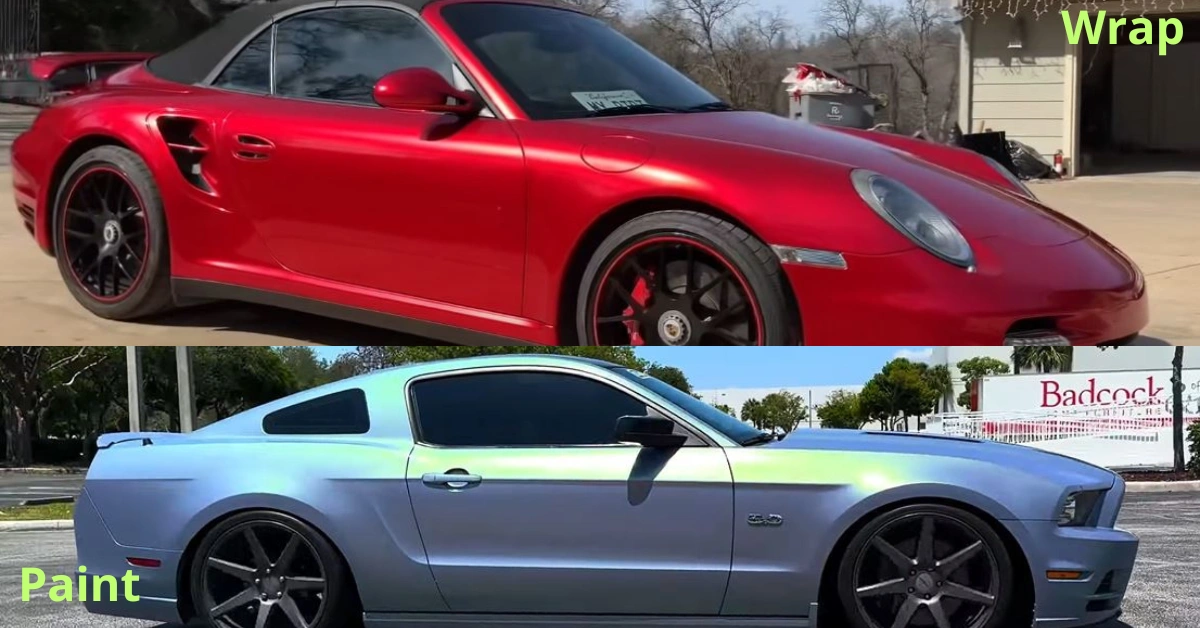Introduction
Thinking about giving your car a fresh new look but not sure whether to wrap or paint it? This is one of the most common questions car owners face. Both options, traditional paint jobs and modern vinyl wraps, come with unique benefits, costs, and maintenance requirements.
In this guide, we’ll compare car wrap vs paint in terms of price, durability, customization, and upkeep. Whether you’re a car buyer weighing long-term value or an auto shop professional advising customers, this breakdown will help you choose the right option for your ride.
Key Takeaways
- Car wraps are often more affordable upfront than high-quality paint jobs.
- Paint offers long-term durability, especially with proper care.
- Vinyl wraps allow endless customization, from gloss to matte to chrome finishes.
- Maintenance differs: wraps require gentle care, while paint may need polishing or touch-ups.
- Resale value can be preserved with wraps since they protect the original paint.

Car Wrap vs Paint: Cost Comparison
When it comes to budget, the difference is significant.
- Vinyl Wrap: A full wrap typically costs $2,000–$5,000, depending on size, finish, and installer expertise. Learn more about the cost of wrapping a car.
- Paint Job: A professional respray can range from $3,000-$10,000+ for showroom-quality results. Cheaper paint jobs exist, but they often fade or chip within a few years.
👉 Installer Tip: If you plan to switch designs every 3–5 years, a wrap is more cost-effective than repainting.
Durability & Lifespan
- Paint: With proper care (waxing, polishing), high-quality paint can last 10+ years. However, sun exposure and scratches are constant threats.
- Vinyl Wrap: Premium wraps from 3M, Avery Dennison, or Hexis last 5-7 years on average. You can extend this by following a proper vinyl wrap maintenance routine.
👉 According to 3M’s automotive division, 70% of wrap failures come from poor installation or lack of upkeep, so professional installation is worth it.
Aesthetic Options: Customization & Finish
If you want something unique, wraps win hands down.
- Paint: Limited to traditional colors and finishes (gloss, matte, metallic). Special paints (pearlescent or candy) are expensive.
- Wrap: Over hundreds of finishes, matte, satin, gloss, chrome, carbon fiber, and custom prints. Swapping designs is quick without damaging factory paint.
| Finish Type | Paint Availability | Vinyl Wrap Availability |
| Gloss | ✅ Common | ✅ Wide range |
| Matte | Rare/Expensive | ✅ Affordable & popular |
| Chrome | ❌ Very costly | ✅ Easily available |
| Custom Prints | ❌ Almost impossible | ✅ Unlimited designs |
👉 See full pros and cons of car wrapping for a detailed breakdown.
Maintenance & Care
- Paint Care: Needs polishing, waxing, and scratch repairs. Sun exposure can lead to fading.
- Wrap Care: Avoid harsh chemicals and high-pressure washes. Hand washing is best. Check out our vinyl wrap maintenance guide.
👉 DIY Warning: Using automatic car washes on wraps can cause premature peeling and edge lifting.
Resale Value Considerations
- Paint: Repainting can lower resale value if not done in original factory color.
- Wrap: Protects original paint, which helps maintain car value. When removed, the paint underneath is often in near-new condition.
👉 As one installer from Avery Dennison says: “A vinyl wrap is like a phone case for your car, it protects while letting you customize.”
Vinyl Wrap FAQs (People Also Ask)
Yes, wrapping a car is usually cheaper. A full vinyl wrap typically costs $2,000-$5,000, while a professional paint job can run $3,000-$10,000+ depending on quality and finish. Wraps also give you the flexibility to change designs without a major expense. Curious about the numbers? See the full breakdown of the cost of wrapping a car.
A quality paint job can last 10+ years, while vinyl wraps from brands like 3M and Avery Dennison typically last 5-7 years with proper care. Wraps don’t last as long, but they protect the original paint underneath, which can help preserve resale value. For detailed insights, check our vinyl wrap lifespan guide.
It’s not recommended. Vinyl needs a smooth, clean surface to stick properly. If your car has peeling clear coat, scratches, or rust, the wrap may bubble or fail. Installer tip: Fix dents and paint damage before wrapping for the best finish.
No, high-quality wraps are designed to be paint-safe when installed and removed correctly. In fact, they act like a shield against UV rays, scratches, and minor chips. Issues only occur with low-quality vinyl or DIY removals gone wrong. For a balanced view, read about the pros and cons of car wrapping.
Hand washing with mild soap and water is ideal. Avoid automatic car washes, abrasive brushes, and strong solvents, they can lift edges and damage the film. DIY warning: Never polish or wax vinyl, as it can cloud the finish. For more care tips, see our vinyl wrap maintenance guide.
It depends on your style goals. Paint gives a classic, deep-gloss look and lasts longer, while wraps offer endless finishes, matte, satin, chrome, even custom graphics, that paint can’t achieve without extreme costs. Wraps are ideal if you want unique aesthetics or frequent style changes.
Conclusion
So, car wrap vs paint, which is better? The answer depends on your goals. If you want long-term durability and classic looks, paint is the way to go. But if you’re seeking affordable customization and flexibility without hurting resale value, a wrap may be your best choice.
Explore related guides to make the right call:
👉 Ready to transform your ride? Contact a certified installer near you for professional advice.

